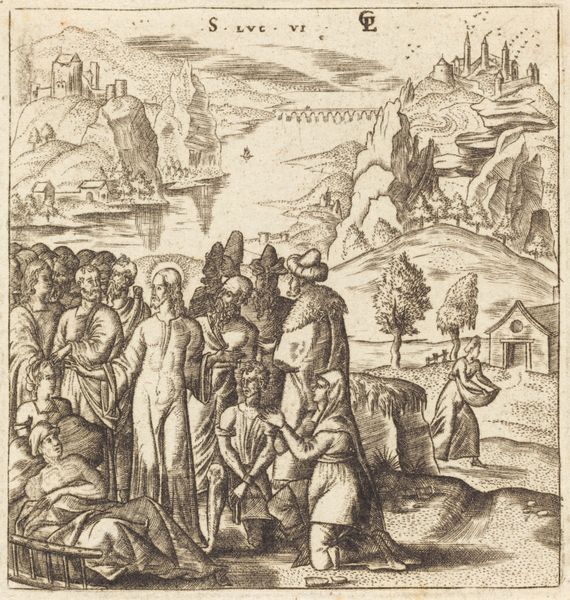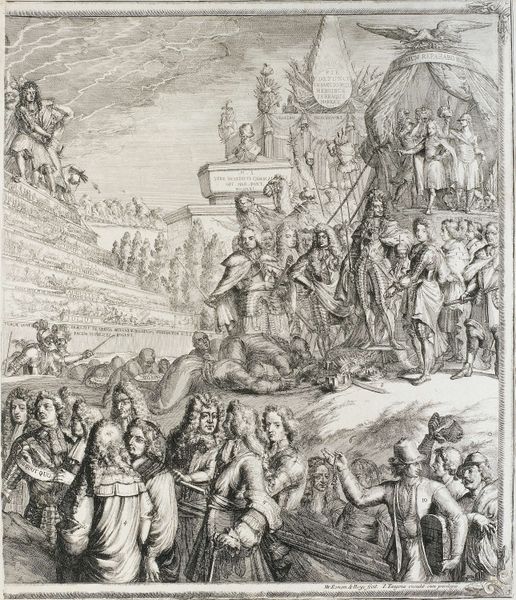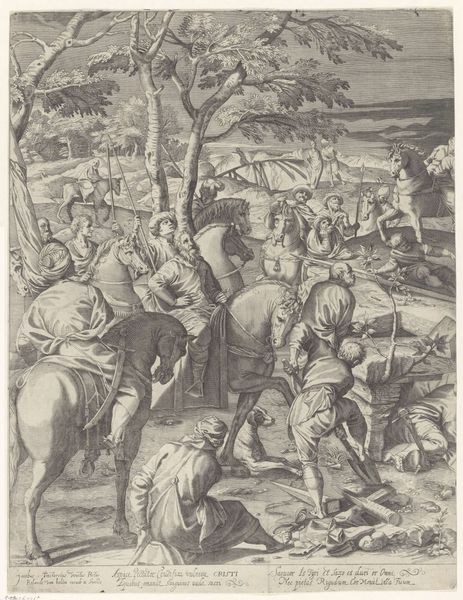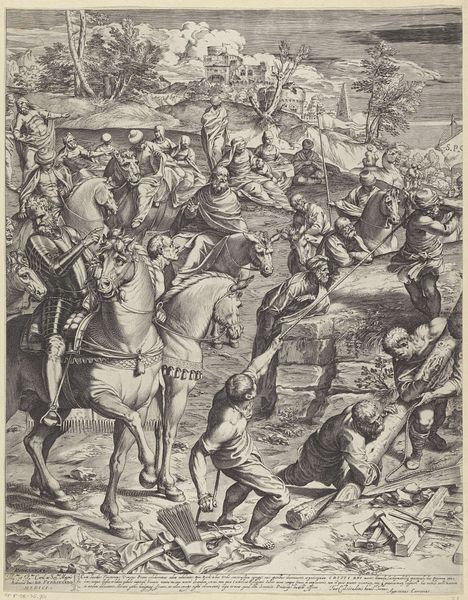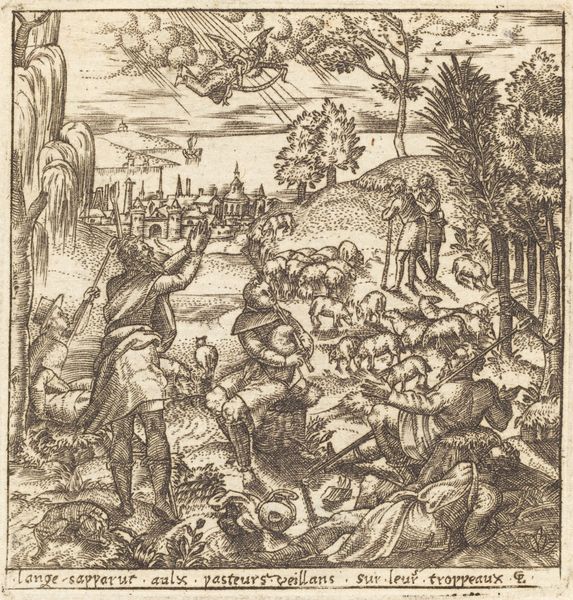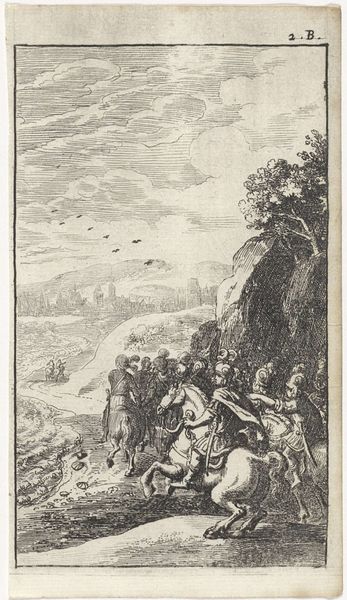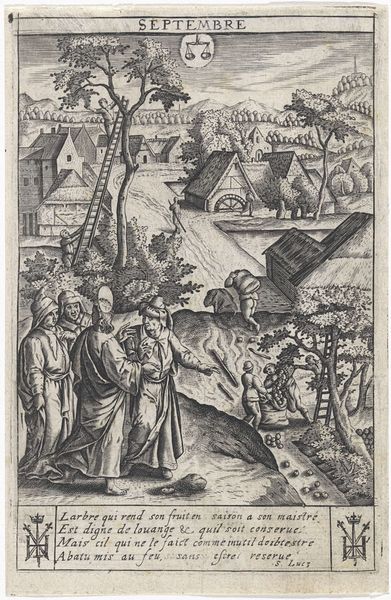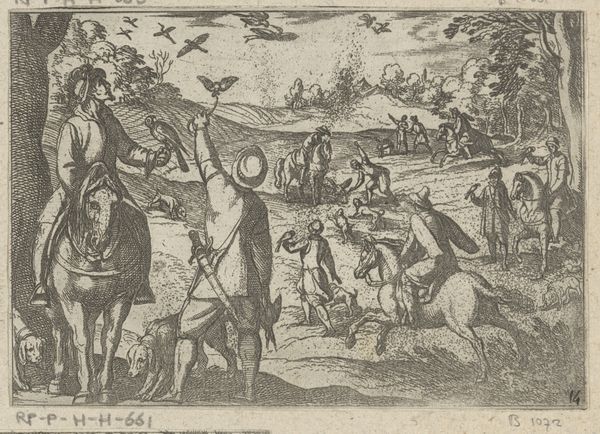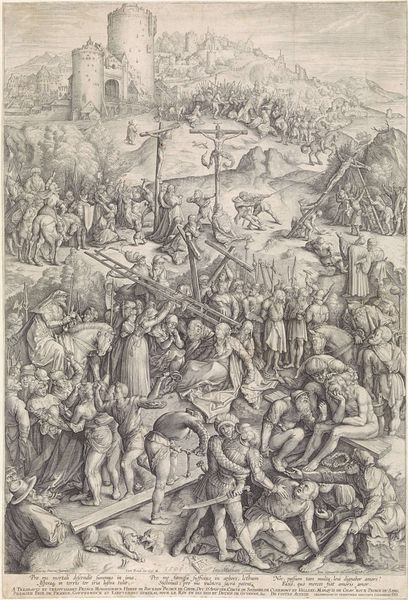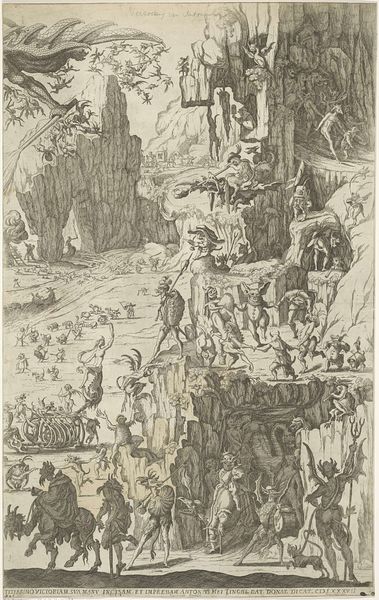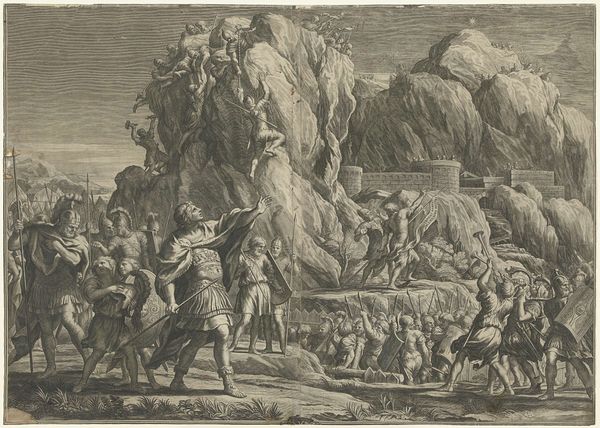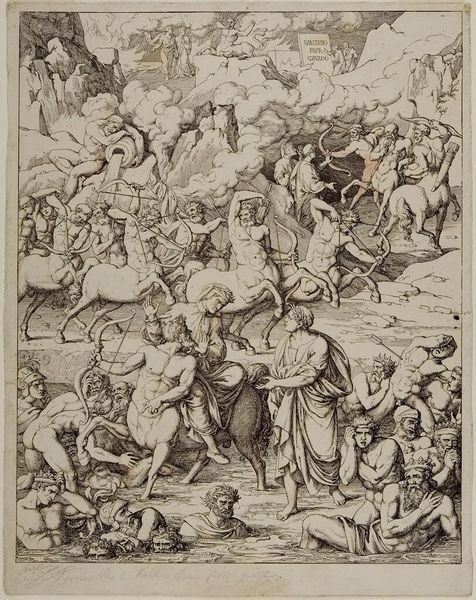
drawing, print, engraving
#
drawing
#
ink drawing
#
narrative-art
# print
#
pen illustration
#
pen sketch
#
figuration
#
11_renaissance
#
line
#
history-painting
#
engraving
Dimensions: height 329 mm, width 272 mm
Copyright: Rijks Museum: Open Domain
Editor: This is Giovanni Battista Fontana's "The Bearing of the Cross," dating somewhere between 1535 and 1587. It’s an engraving, currently held at the Rijksmuseum. The density of figures and the clear, almost frantic lines create a feeling of chaos and brutality. How do you interpret this work, especially considering the period it was made? Curator: It’s crucial to situate Fontana's work within the religious and political tensions of the late Renaissance. "The Bearing of the Cross," while depicting a biblical scene, is also a powerful statement on power, suffering, and resistance. The chaotic composition reflects the social upheaval and religious persecution that characterized the era. Notice how Christ is almost lost in the crowd, which might serve to humanize him. Editor: I hadn't thought of it that way, but the facelessness and uniformity of the soldiers definitely conveys power and control. But what about the women and children at the bottom? They seem disconnected from the central action. Curator: Precisely! The marginalization of women and children, rendered in emotional distress, serves as a potent commentary on the vulnerabilities exposed by systemic injustice. They represent those most affected by power structures, voiceless within the larger narrative of religious and political conflict. How does that reading shift your initial understanding? Editor: It deepens it, actually. It transforms what initially seemed like a purely religious scene into a commentary on social hierarchies. It makes you consider who has the power to dictate history. Curator: Exactly. Art is not created in a vacuum. Considering the socio-political conditions reveals the underlying messages and critiques embedded within it, connecting the artwork to wider conversations on agency, representation, and social justice that still resonate today. Editor: I'll never look at a historical artwork the same way again. Thanks for shining a new light! Curator: It’s all about recognizing those hidden voices, isn't it? And challenging the narratives that silence them.
Comments
No comments
Be the first to comment and join the conversation on the ultimate creative platform.
